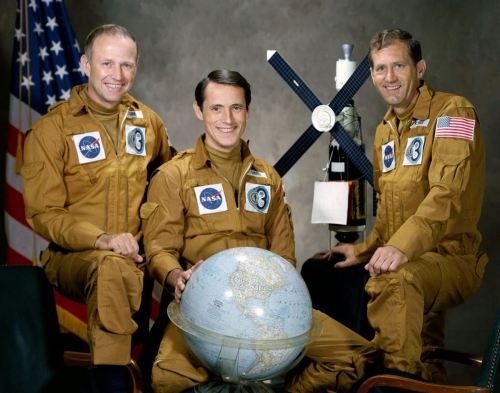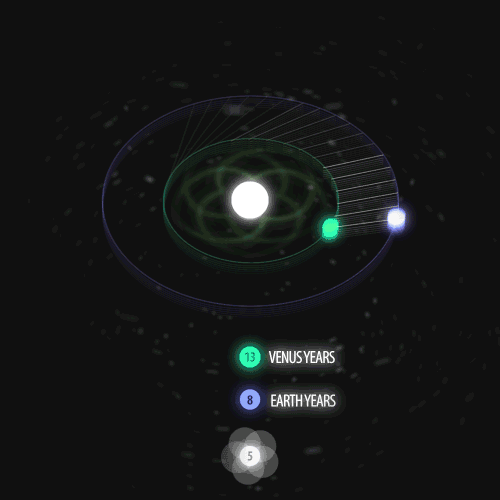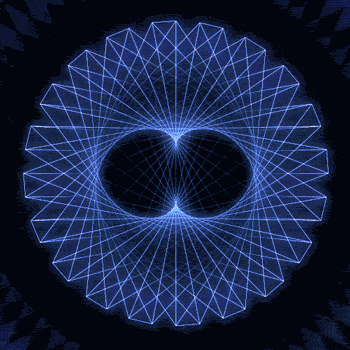Goodnight Moon. Goodnight Milky Way. Goodnight Ursa Major (UMa I DSph). Goodnight 24IC 1613 (UGC 662.350[8].
goodnight moon. goodnight Milky Way. goodnight Ursa Major (UMa I dSph). goodnight 24IC 1613 (UGC 662.350[8].
More Posts from Fillthevoid-with-space and Others
Here’s a great example of the kinds of experiments astronauts perform on the International Space Station, just like I talked about in Episode 19! I absolutely want to high-five whoever called is ISS-CREAM.
From Frozen Antarctica to the Cold Vacuum of Space
A new experiment that will collect tiny charged particles known as galactic cosmic rays will soon be added to the International Space Station. The Cosmic Ray Energetics And Mass for the International Space Station payload, nicknamed ISS-CREAM, will soon be installed in its new home on the Station’s Japanese Experiment Module Exposed Facility. ISS-CREAM will help scientists understand more about galactic cosmic rays and the processes that produce them.

Wait, what are cosmic rays?
Cosmic rays are pieces of atoms that move through space at nearly the speed of light. Galactic cosmic rays come from beyond our solar system.

They provide us with direct samples of matter from distant places in our galaxy.
Why do these things go so fast?
Galactic cosmic rays have been sped up by extreme processes. When massive stars die, they explode as supernovas. The explosion’s blast wave expands into space along with a cloud of debris.

Particles caught up in this blast wave can bounce around in it and slowly pick up speed. Eventually they move so fast they can escape the blast wave and race away as a cosmic ray.
Where can we catch cosmic rays?
Cosmic rays are constantly zipping through space at these super-fast speeds, running into whatever is in their path – including Earth.

But Earth’s atmosphere is a great shield, protecting us from 99.9 percent of the radiation coming from space, including most cosmic rays. This is good news for life on Earth, but bad news for scientists studying cosmic rays.
So… how do you deal with that?
Because Earth has such an effective shield against cosmic rays, the best place for scientists to study them is above our atmosphere – in space. Since the 1920s, scientists have tried to get their instruments as close to space as possible. One of the simplest ways to do this is to send these instruments up on balloons the size of football stadiums. These balloons are so large because they have to be able to both lift their own weight and that of their cargo, which can be heavier than a car. Scientific balloons fly to 120,000 feet or more above the ground – that’s at least three times higher than you might fly in a commercial airplane!

Credit: Isaac Mognet (Pennsylvania State University)
Earlier versions of ISS-CREAM’s instruments were launched on these giant balloons from McMurdo Station in Antarctica seven times, starting in 2004, for a total of 191 days near the top of the atmosphere. Each of these flights helped the team test their hardware and work towards sending a cutting-edge cosmic ray detector into space!
How is going to space different than flying balloons?
Balloon flights allowed the team to collect a lot of cosmic rays, but even at 120,000 feet, a lot of the particles are still blocked. Scientists at the University of Maryland, College Park, who operate ISS-CREAM, expect to get about 10 times as much data from their new home on the International Space Station.

That’s because it will be both above the atmosphere and fly far longer than is possible with a balloon. As you might imagine, there are large differences between flying something on a balloon and launching it into space. The science instruments and other systems had to be changed so ISS-CREAM could safely launch on a rocket and work in space.
What will ISS-CREAM do?
While on the space station, ISS-CREAM will collect millions of cosmic rays – electrons, protons and atomic nuclei representing the elements found in the solar system. These results will help us understand why cosmic rays reach the wicked-fast speeds they do and, most important, what limits those speeds.
ISS-CREAM launches to the International Space Station aboard the latest SpaceX Dragon spacecraft, targeted to launch August 14. Want to learn more about ISS-CREAM and some of our scientific balloons? Check out our recent feature, NASA’s Scientific Balloon Program Reaches New Heights.
Make sure to follow us on Tumblr for your regular dose of space: http://nasa.tumblr.com


Happy Labor Day. Today I learned about probably the first strike to happen IN SPACE.

(I broke the last link, whoops)
Another week of theory, but no fun new particles. Instead, hear me try to say a lot of names of scientists or their eponymous equations as I talk about dark energy in the universe! Learn what some astronomers think it is and why other astronomers think there are better explanations for certain nutty galactic phenomena.
Below the cut are my sources, music credits, a vocab list, and the transcript of this episode. Let your voice be heard and tell me what you think I should research next by messaging me here, tweeting at me at @HDandtheVoid, or asking me to my face if you know me in real life. And please subscribe to the podcast on iTunes, rate it and maybe review it, and tell friends if you think they’d like to listen!
(If anything about dark matter or dark energy or cosmic microwave background radiation confused you over the past few podcasts, for sure send me your questions so I can ask someone more qualified than me—my doctorate student friend! My thoughts on the next episode are still the Voyager golden records, space race history, the transit of Venus, the Moon landing, Edmond Halley, or Dark Sky Preserves and it will be up on November 20th.)
Glossary
baryons - heaviest particles. Ex. Protons, neutrons. In astroparticle physics, electrons are included in baryonic matter.
cosmic microwave background radiation - the electromagnetic radiation left over from the time of recombination in Big Bang cosmology.
dark energy - a theoretical force made up of unknown, undetectable energy. It is used to explain why the universe is expanding more rapidly over time instead of slowing its expansion.
dark matter - a theoretical mass made up of unknown particles that have not been created on Earth. It is used to explain why galaxy clusters have 10x the mass that their light output suggests they would have; why distant stars on the edges of spiral galaxies orbit at the same speed as stars near the center of the galaxy; and the accretion of gases that created galaxies at the beginning of the universe.
fundamental forces - four fundamental forces in our current model of the universe: the strong and weak nuclear forces, the electromagnetic force, and gravity.
gravitational lensing - when light from more distant sources passes near a massive star, galaxy, or galaxy cluster and the object’s gravity bends the light like a lens to provide a warped angle view of space.
Transcript
Sources
Dark energy via NASA
Dark energy via Hubble
“The strangeness of dark energy is thrilling.”
Fundamental forces via Georgia State University
Dark energy via Science Magazine (April 2017)
László Dobos: “We assume that every region of the universe determines its expansion rate itself.”
Dark energy and the South Pole Telescope via Smithsonian Magazine (April 2010)
“Knowing what dark matter is would help scientists think about how the structure of the universe forms. Knowing what dark energy does would help scientists think about how that structure has evolved over time—and how it will continue to evolve.”
Intro Music: ‘Better Times Will Come’ by No Luck Club off their album Prosperity
Filler Music: ‘Even The Darkness Has Arms’ by The Barr Brothers off their album The Sleeping Operator
Outro Music: ‘Fields of Russia’ by Mutefish off their album On Draught
My microphone just arrived! Now to set it up and figure out how the hell it works....
Ten minutes till this happens! I can’t watch it live but I’m excited to see what happens in the aftermath…
In about 20 minutes SpaceX will attempt to reuse a rocket booster they’ve already used before. If they succeed it could be a very serious step forward in space exploration capabilities.
Go SpaceX. Pleassssse…
I saw the picture and I thought it was a photo of the space between a Venetian blind and a window frame but no. No. It was a moon between the rings of Saturn.

HELIACAL
[adjective]
pertaining to or occurring near the sun, especially applied to such risings and settings of a star as are most nearly coincident with those of the sun while yet visible.
Etymology: Late Latin hēliac(us) < Greek hēliakós.
[Luis Tamani - Luz Solar]





Fibonacci you crazy bastard….
As seen in the solar system (by no ridiculous coincidence), Earth orbits the Sun 8 times in the same period that Venus orbits the Sun 13 times! Drawing a line between Earth & Venus every week results in a spectacular FIVE side symmetry!!
Lets bring up those Fibonacci numbers again: 1, 1, 2, 3, 5, 8, 13, 21, 34..
So if we imagine planets with Fibonacci orbits, do they create Fibonacci symmetries?!
You bet!! Depicted here is a:
2 sided symmetry (5 orbits x 3 orbits)
3 sided symmetry (8 orbits x 5 orbits)
5 sided symmetry (13 orbits x 8 orbits) - like Earth & Venus
8 sided symmetry (21 orbits x 13 orbits)
I wonder if relationships like this exist somewhere in the universe….
Read the Book | Follow | Hi-Res -2- -3- -5- -8-
September 15
This one is technically not yet history, because at the time of posting, the little craft has about half an hour left to go. That said, let’s proceed.
In 2017, NASA’s Cassini space probe ended its twenty-year mission at Saturn. After a nearly-seven-year-long journey there, it orbited the ringed planet for 13 years and just over two months, gathering copious amounts of information about the planet, said rings, and many of its moons. It landed an ESA probe called Huygens on Titan, the first-ever soft landing in the outer Solar System. It discovered lakes, seas, and rivers of methane on Titan, geysers of water erupting from Enceladus (and passed within 50 miles of that moon’s surface), and found gigantic, raging hurricanes at both of Saturn’s poles.
And the images it returned are beautiful enough to make you weep.
On this day in 2017, with the fuel for Cassini’s directional thrusters running low, the probe was de-orbited into the Saturnian atmosphere to prevent any possibility of any contamination of possible biotic environments on Titan or Enceladus. The remaining thruster fuel was used to keep the radio dish pointed towards Earth so the probe could transmit information about the upper atmosphere of Saturn while it was burning up due to atmospheric friction.
This is us at our best. We spent no small amount of money on a nuclear-powered robot, launched it into space, sent it a billion miles away, and worked with it for two decades just to learn about another planet. And when the repeatedly-extended missions were through, we made the little craft sacrifice itself like a samurai, performing its duty as long as it could while it became a shooting star in the Saturnian sky.

Rhea occulting Saturn

Water geysers on Enceladus

Strange Iapetus

Look at this gorgeousness

A gigantic motherfucking storm in Saturn’s northern hemisphere

Tethys

This image is from the surface of a moon of a planet at least 746 million miles away. Sweet lord

Mimas

Vertical structures in the rings. Holy shit

Titan and Dione occulting Saturn, rings visible

Little Daphnis making gravitational ripples in the rings

That’s here. That’s home. That’s all of us that ever lived.

Saturn, backlit

A polar vortex on the gas giant

Icy Enceladus
(All images from NASA/JPL)

One-year countdown to solar eclipse, August 21, 2017: path of totality overlaid on U.S. population density and interstate map.
-
 asleepybisexual reblogged this · 2 weeks ago
asleepybisexual reblogged this · 2 weeks ago -
 asleepybisexual liked this · 2 weeks ago
asleepybisexual liked this · 2 weeks ago -
 ohheypeyt reblogged this · 2 weeks ago
ohheypeyt reblogged this · 2 weeks ago -
 silentandvast liked this · 2 weeks ago
silentandvast liked this · 2 weeks ago -
 amongthefallingstars reblogged this · 2 weeks ago
amongthefallingstars reblogged this · 2 weeks ago -
 caramel-drizzel liked this · 2 weeks ago
caramel-drizzel liked this · 2 weeks ago -
 spacesymbol liked this · 1 month ago
spacesymbol liked this · 1 month ago -
 exactlymypoint reblogged this · 1 month ago
exactlymypoint reblogged this · 1 month ago -
 kingcervix reblogged this · 1 month ago
kingcervix reblogged this · 1 month ago -
 oceans-swim reblogged this · 1 month ago
oceans-swim reblogged this · 1 month ago -
 arisakuro liked this · 1 month ago
arisakuro liked this · 1 month ago -
 soulswimmr liked this · 1 month ago
soulswimmr liked this · 1 month ago -
 redwitchrune reblogged this · 1 month ago
redwitchrune reblogged this · 1 month ago -
 magicruned reblogged this · 1 month ago
magicruned reblogged this · 1 month ago -
 cigarettesmokeandroses reblogged this · 1 month ago
cigarettesmokeandroses reblogged this · 1 month ago -
 krakintakin reblogged this · 1 month ago
krakintakin reblogged this · 1 month ago -
 imsurroundedbyidiots553 reblogged this · 1 month ago
imsurroundedbyidiots553 reblogged this · 1 month ago -
 bananasofthorns reblogged this · 1 month ago
bananasofthorns reblogged this · 1 month ago -
 perpetualspace reblogged this · 1 month ago
perpetualspace reblogged this · 1 month ago -
 superbcandyangel liked this · 1 month ago
superbcandyangel liked this · 1 month ago -
 vaguenostalgiainvading liked this · 1 month ago
vaguenostalgiainvading liked this · 1 month ago -
 jellysmack liked this · 1 month ago
jellysmack liked this · 1 month ago -
 sinatrasmafiaconnections reblogged this · 1 month ago
sinatrasmafiaconnections reblogged this · 1 month ago -
 scrunklybunny liked this · 1 month ago
scrunklybunny liked this · 1 month ago -
 shoobaru reblogged this · 1 month ago
shoobaru reblogged this · 1 month ago -
 lovelettersbackhome liked this · 1 month ago
lovelettersbackhome liked this · 1 month ago -
 xoxoivy13 liked this · 1 month ago
xoxoivy13 liked this · 1 month ago -
 meangirlsbway liked this · 1 month ago
meangirlsbway liked this · 1 month ago -
 xoxzso reblogged this · 1 month ago
xoxzso reblogged this · 1 month ago -
 claredactyl liked this · 1 month ago
claredactyl liked this · 1 month ago -
 butterandscotch reblogged this · 1 month ago
butterandscotch reblogged this · 1 month ago -
 ion-somnia reblogged this · 1 month ago
ion-somnia reblogged this · 1 month ago -
 lights-at-night liked this · 1 month ago
lights-at-night liked this · 1 month ago -
 ladybadasskillington reblogged this · 1 month ago
ladybadasskillington reblogged this · 1 month ago -
 forgottendance reblogged this · 1 month ago
forgottendance reblogged this · 1 month ago -
 blepbleptikusbkgkiog reblogged this · 1 month ago
blepbleptikusbkgkiog reblogged this · 1 month ago -
 lipstickandpositivity liked this · 1 month ago
lipstickandpositivity liked this · 1 month ago -
 tidepoolalgae reblogged this · 1 month ago
tidepoolalgae reblogged this · 1 month ago -
 nenehyuuchiha liked this · 1 month ago
nenehyuuchiha liked this · 1 month ago -
 zerefdragn33l liked this · 1 month ago
zerefdragn33l liked this · 1 month ago -
 simpinaintez420 liked this · 1 month ago
simpinaintez420 liked this · 1 month ago -
 fruit-luips liked this · 1 month ago
fruit-luips liked this · 1 month ago -
 solar--symphony liked this · 1 month ago
solar--symphony liked this · 1 month ago -
 winterswrathe liked this · 1 month ago
winterswrathe liked this · 1 month ago -
 naevabelle liked this · 1 month ago
naevabelle liked this · 1 month ago -
 fellow-hooman reblogged this · 1 month ago
fellow-hooman reblogged this · 1 month ago -
 fellow-hooman liked this · 1 month ago
fellow-hooman liked this · 1 month ago -
 carlations liked this · 1 month ago
carlations liked this · 1 month ago -
 kidbiscuitt reblogged this · 1 month ago
kidbiscuitt reblogged this · 1 month ago -
 kidbiscuitt liked this · 1 month ago
kidbiscuitt liked this · 1 month ago
A podcast project to fill the space in my heart and my time that used to be filled with academic research. In 2018, that space gets filled with... MORE SPACE! Cheerfully researched, painstakingly edited, informal as hell, definitely worth everyone's time.
243 posts